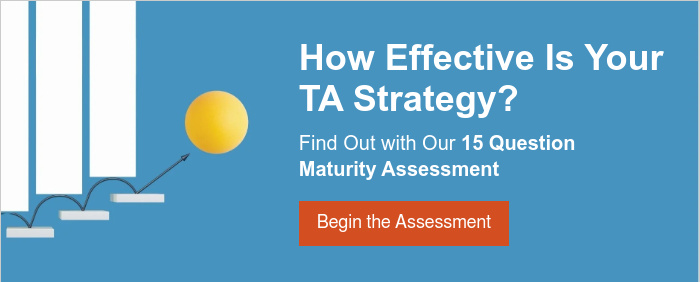If you're like most talent leaders, you've seen strong candidates walk away because your recruitment process took too long or lacked clarity. With competition for skilled candidates showing no signs of slowing, it’s not enough to simply move fast. You need a structured process that creates clarity, accountability, and momentum from day one.
Why Recruitment Process Structure Matters More Than Ever
When your recruitment process lacks structure, everyone feels the impact. Hiring managers grow frustrated waiting on quality candidates, recruiters spend more time on logistics than strategy, and candidates form lasting impressions about your culture based on their experience. Well-structured recruitment processes do more than just speed up hiring. They also lead to better-quality hires who stay longer. With these five fixes, you'll transform how efficiently you hire while still finding the right people for your team.
5 Fixes for a More Efficient Recruitment Process
Fix #1: Standardize Your Job Intake Process
Here's a scenario you'll recognize: a hiring manager rushes over with an "urgent" job opening, but when you start asking questions, the requirements keep shifting. What started as a mid-level role suddenly needs senior-level skills, or the budget "needs to be discussed" after you've already sourced candidates.
Stop this chaos before it starts with a formal job intake process. Require hiring managers to complete a brief covering the role's objectives, must-have qualifications, salary range, and 90-day success metrics. Then hold a 30-minute alignment meeting to discuss market realities and set realistic timelines. Yes, it feels like extra work upfront, but it prevents weeks of confusion later.
Fix #2: Shorten the Interview Timeline
Drawn-out interview processes are a top reason candidates drop out. In fact, "time being disrespected during the recruiting process"—particularly around interviews and appointments—consistently ranks as the number one withdrawal reason in North America and stays in the top three globally. While you're scheduling that fourth round of interviews, your top choice is likely accepting an offer from a company that could make decisions faster.
Aim to complete your entire interview process within a 2-week window from application to offer. Take a hard look at how many rounds are truly necessary and eliminate redundant steps. Consider combining panel interviews or using asynchronous video tools for initial screenings to move faster without compromising quality. Remember, every additional week in your process increases the chance that candidates will find other opportunities.
Fix #3: Prevent Drop-Offs with Frequent Communication
Poor communication is one of the biggest, yet most overlooked, blockers to efficient talent acquisition. Candidates get lost in the process, hiring managers don't know where things stand, and recruiting teams spend excessive time on status updates rather than strategic work. 51% of candidates abandon the recruitment process due to a lack of timely and clear communication.
Set up clear communication protocols that specify who handles what. Recruiters manage all candidate communication, hiring managers get weekly pipeline updates, and automated emails handle routine notifications. Create a shared dashboard that serves as the single source of truth for each position's status. When everyone knows where to find information, you'll spend less time managing communication and more time actually making quality hires.
Fix# 4: Standardize the Decision-Making Process
Here's a scenario that happens too often: a perfect candidate gets multiple offers while your team schedules another "discussion" about whether to move forward. Analysis paralysis is real, and it's costing you great hires because no one wants to make the call or everyone thinks someone else will.
Define who makes the final decision for each role level and set firm timelines for those decisions. Create simple decision-making templates with weighted criteria and scoring to move from "I have a good feeling about this person" to "here's why this person scores highest on our key requirements." When decision-making is structured and owned, it happens faster.
Fix #5: Automate Low-Value Tasks
HR staff are spending as much as 57% of their time on administrative tasks, according to Deloitte research. Your recruiting team shouldn't be spending hours each week sending confirmation emails, scheduling interviews, or updating spreadsheets. These manual tasks eat up time that could be spent on high-value work like sourcing top talent and building candidate relationships.
Start by identifying the repetitive tasks that consume your team's time. Set up automated email sequences for common scenarios like application confirmations, interview reminders, and rejection notifications. Use scheduling tools that let candidates book their own interview slots, and configure your ATS to automatically move candidates between stages based on specific actions.
The Bigger Picture
Here's what happens when you get your recruitment process right: you stop losing great candidates to competitors, your hiring managers trust the process and give better feedback, and your employer brand improves as candidates have positive experiences even when they don't get the job. Most importantly, you free up your talent team to focus on strategic work like building talent pipelines instead of constantly firefighting process issues. That's when talent acquisition transforms from a necessary headache into a genuine competitive advantage.
Ready to Bring More Structure to Your Recruitment Process?
Start by taking our Talent Acquisition Maturity Assessment for personalized next steps.






